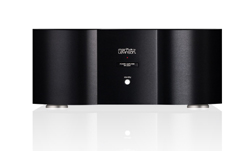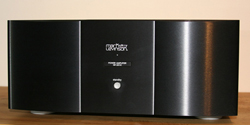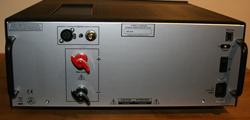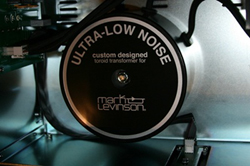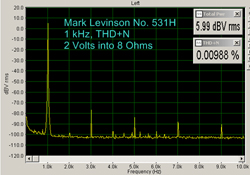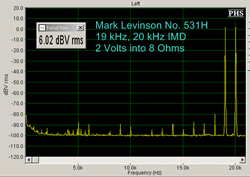Introduction
Mark Levinson is one of the world’s great high end audio manufacturers. They make a wide variety of electronic components, including pre amps, DACs, CD transports, SACD players as well as a surround sound processor they call a “Media Console”. Levinson has also teamed with luxury auto manufacturer, Lexus so you can take their audio products on the road. Nonetheless, Mark Levinson is almost certainly best known for their very large, very powerful and very expensive power amplifiers. They enjoy a well deserved reputation for making some of the best – if not the best – solid state power amps around.
The Nº 531H is from a series of four new Mark Levinson power amplifiers. The amplifiers in the Nº 500H series are available in 1, 2, 3 and 5-channel configurations. Each model uses the same chassis. The Nº 531H’s are monoblock amplifiers that are rated at 300 watts per channel into an 8 ? load. A first for Levinson is that the 3 and 5-channel models are quasi-monoblock designs. The Nº 500H Series of amplifiers are the most affordable amplifiers from a true high end company.
Specifications
- Design: Fully-Differential Monoblock Power Amplifier
- Power Output : 300 Watts RMS into 8 Ohms
- MFR: 10 Hz – 20 kHz ± 0.5 dB
- THD: 0.5%
- Input impedance: 60 kOhms (Balanced), 30 kOhms (Unbalanced)
- S/N: >85 db at 2.83V
- Inputs: Balanced XLR and Unbalanced RCA
- Control: One Ethernet 10 Base-T port, One 3.5mm trigger input and One 3.5mm plug trigger output
- Dimensions: 7.65″ H x 17.75″ W x 19.83″ D
- Weight: 52.5 Pounds/each
- MSRP: $13,000/pair
- Mark Levinson
Design And Setup
The Nº 500H amplifiers are all-new designs from Mark Levinson. They incorporate many typical Levinson design features, while allowing a discretionary influx of new ideas. The Nº 500H amplifiers are a little smaller and lighter than most Levinson amps. They are designed to provide nimble power into real-world loads with good transient response and ample power for every day program material
Like most Mark Levinson amplifiers, the Nº 500H series are fully-differential amps. This means that the signal remains balanced from the line level input to the speaker outputs. And similar to other Mark Levinson amps, the Nº 500H amplifiers feature numerous output devices. In the case of the Nº 531H, there are 16 output transistors per channel.
Another design hallmark of Mark Levinson amplifiers is the inclusion of a lot of capacitance for each amplifier channel. So the design of the Nº 531H includes a substantial amount of capacitance for each amplifier channel, only this time numerous smaller capacitors are used so the capacitors can be situated closer to the output devices. Levinson claims that this design feature provides greater transient response when power is needed quickly
The Nº 531H is a current feedback design as opposed to a voltage feedback design. This topology is said to provide faster operation, improved slew rate and greater bandwidth at high gain levels
Like other Levinson amps, the Nº 531H has impeccable build quality. The front panel has a very nice anodized aluminum finish. There is a soft start On/Standby button and a Power/Status LED in the center of the front panel. The status LED glows steadily when the unit is on and flashes different patterns to let you know if it is in standby or a protection mode. The inputs are switchable between XLR and RCA. The Nº 531H amps also have the Mark Levinson exclusive hurricane binding posts. Also on the back panel are Ethernet and 12V trigger controls and a master power switch
Like other Mark Levinson amps the traces on the printed circuit boards are curved. Also, the Nº 531H has an isolated chassis and isolated signal grounds to minimize noise. This is said to optimize detail, even at low listening levels. The case is cooled passively by some large heat sinks. The sparsely-populated case was designed to hold up to five channels, so the amps always ran very cool.
The biggest area where the Nº 531H deviates from past Mark Levinson amplifier designs is that it doesn’t “double-down” when the speaker impedance is halved. As a matter of fact, Levinson doesn’t even provide an official specification for the amp’s output into a 4 ? load. Mark Levinson claims that the “double-down” capability is not absolutely necessary since the Nº 500H amps are designed for real-world program material. According to Levinson, with real-world material, the average level is relatively low with much higher peak power demands. So the Nº 500H amps are designed for good transient response and peak power delivery as opposed to high continuous outputs. That is one reason why the Nº 500H amps contain relatively small transformers and are overall lighter-weight than what you would expect from Mark Levinson. Bear in mind that they also don’t cost nearly as much as the larger Levinson amps.
In Use
One of the major lessons I’ve learned about building sound systems is that it is very important to get enough power. If you think you need 50 watts per channel, then get 100 watts instead. If you think you need 100 wpc, then go get 300 wpc. And that’s where the Mark Levinson Nº 531H comes in to the picture. While these amps aren’t super duper powerful, 300 watts is still a substantial amount of power by any measure. The extra headroom this provides against 100 watts isn’t there so you can play the music louder. Instead, the extra headroom does help you get the most out of your system. This is true even when you’re listening to a small ensemble like we have here with the John Coltrane A Love Supreme SACD.
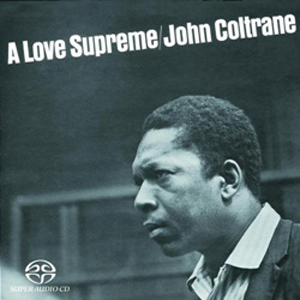
Straight away, you could tell that the Nº 531H amps had a firm grip on the speakers. There was an almost dead silent background. The low noise floor in a sound system is like the black level in a monitor. It is the foundation that supports all the action. The dark background of the Levinson Nº 531H became an ideal launch point for every transient. Any comfortable listening level was so well within the design parameters of the amps that system-induced distortion was essentially negligible and inaudible
The Mark Levinson Nº 531H amplifiers were so much smoother and warmer sounding than Class D amplifiers. The music simply swirled out of the speakers. I can’t remember ever enjoying the bass solo at the end of Track 3 more than I did through the Nº 531H’s. Then on Track 4, “Psalm”, I was simply blown away by the expansive stereo image that was also amazingly rock-solid. I could literally pinpoint every sound on the CD. This may be the cleanest treble ever from my system. But it also let the tape hiss shine through. And that just made me feel even more nostalgic . . .
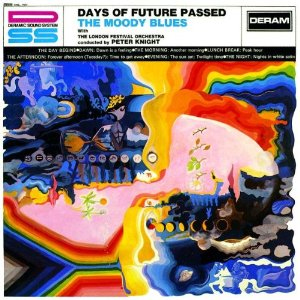
So I reached for another SACD of an old-timey group: Moody Blues The Days of Future Past. The sound of the orchestra was surprisingly 3d for such an old record. The instruments existed in a three-dimensional space as well as any two-channel system I have ever had. Take “Sunset”, for example. The claves and triangles were all about the room. And this is the stereo layer?
Once again, the speaker drivers were expertly controlled by the Mark Levinson Nº 531H’s. On “Tuesday Afternoon”, Justin Hayward’s voice was so very pure and simply floated above the imaginary stage. Then on “Nights in White Satin”, one of the greatest closing songs on any rock album ever, the ethereal mix preserved all the clarity in the highs. This was an expansive sound in every possible way.
In 2006, Sir Colin Davis conducted the London Symphony Orchestra on a live recording of Handel’s Messiah. It is a sort of high resolution reprise of his highly acclaimed 1966 conducting job of the same works. This is a modern recording and it shows. The first thing you notice is the total lack of tape hiss and even more silent backgrounds in general

Likewise, the first two discs above were presented with a broad soundscape, but this disc was even better. I generally prefer surround at this point in my life. Even on music. But as I listened to these SACD discs in stereo over the Mark Levinson Nº 531H’s, I started wondering about the value of surround sound. These discs sounded so broad, that surround sound was almost a totally moot point. The landscape of instruments was rock-solid, wide and high. So maybe I just need a couple of Levinson monoblocks and a decent pair of speakers and I’d be all set.
The Nº 531H’s kept a great deal of power in reserve which is important when playing back the human voice at near live volume levels. The human voice tends to require more “music power” than most people probably think. And this is true at lower listening levels too. Consequently, No. 48 “The Trumpet Shall Sound” was an utter and total delight over the Mark Levinson Nº 531H’s.

I closed out my critical listening with the Blu Ray of Rob Thomas Something to be Tour: Live at Red Rocks. On “3 a.m.”, the bass guitar provided a super solid foundation while the steel string guitar moaned mournfully. I loved the intro with drums and piano in a sparse arrangement on “You Won’t Be Mine”. The piano was nice and clean sounding. By the time Rob Thomas performed “Bent”, the crowd was really getting into the concert. And he performed this tune with lots of emotion; all the while, his acoustic guitar shone over the Mark Levinson Nº 531H’s.
The disc’s cover highlights an all-acoustic version of “Smooth”. I was skeptical at first, but now I must say that it is a fresh take on this Rob Thomas standard so it deserves special mention here. The acoustic guitar was again thoroughly captivating over the Mark Levinson Nº 531H’s. This disc contains a bonus music video, the “Streetcar Symphony Video”. This music video had the whole big band playing and was totally majestic thanks to the power and control of the Mark Levinson Nº 531H’s.
On the Bench
The THD+N at 1 kHz is less than 0.01 %.
In this test, the No 531H’s Intermodulation Distortion was only 0.006 %
Here, the B-A peak at 1 kHZ is 96 dB below the test signal.
Conclusions
The Mark Levinson Nº 531H’s embody so many wonderful traits. They have a clean, honest and open sound. They are powerful and had such great control over every pair of speakers I put before them. The build quality of these amps is beyond reproach. To top it all off, you have the team at Mark Levinson and their dealer network there to provide you with a stellar customer service experience. So I say that if you take all of these things into account, you will find that the Nº 531H’s are a good value indeed. For those of you who are interested in a pair of high quality monoblocks, then these amps deserve your most serious and thoughtful consideration.



